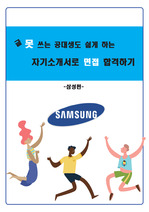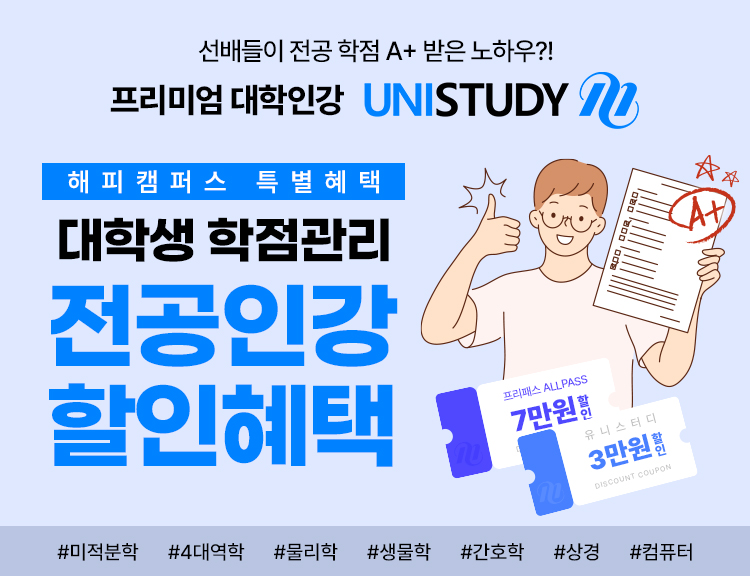사이버초급영작수업에서 튜터와 학생들간의 상호인식조사
럭셔리슬옹
다운로드
장바구니
* 본 문서는 PDF문서형식으로 복사 및 편집이 불가합니다.
소개글
"사이버초급영작수업에서 튜터와 학생들간의 상호인식조사"에 대한 내용입니다.제가 쓴 글입니다. 저자가 저입니다.
목차
CHAPTER 1 INTRODUCTION1.1. Background of the study
1.2. Purpose of the study
1.3. Structure of the study
CHAPTER 2 LITERATURE REVIEW
2.1. Written corrective feedback (CF)
2.1. Issues of written CF
2.2. Computer-mediated communication (CMC)
2.2.1. Advantages of CMC
2.2.2. Disadvantages of CMC
2.3. Online tutor
2.3.1. Tutor feedback in cyber education
2.3.2. The need for English writing tutor
2.3.3. The roles of English writing tutor
2.3.4. Studies on teacher commentary on L2 writing
2.3.5. Student responses
2.3.6. Online interaction and feedback
CHAPTER 3 Design of the study
3.1. Pilot study
3.1.1. Participant’s observation
3.1.2. Learner interview
3.1.3. Research questions
3.2. The main study
3.2.1. Contents of cyber basic English writing
3.2.1.1. Study contents and process
3.2.2. Participants
3.2.3. Study instruments
3.2.3.1. Students’ interaction strategy
3.2.3.2. Free writing assignment
3.2.3.3. Feedback
3.2.4. Research procedure
3.2.4.1. Error counting
3.2.4.2. Students questionnaires
3.2.4.3. Students interviews
3.2.5. Methods of analysis
CHAPTER 4 RESULTS AND DISCUSSION
4.1. Students error types
4.1.1. Students’ error types
4.1.2. Proficient students’ error types
4.1.3 Less-proficient students’ error types
4.2. Students’ perception
4.3. Tutors’ perception
4.4 Discussion
CHAPTER 5 CONCLUSION
5.1. Summary of findings
5.2. Limitations of the study
5.3. Recommended changes to online writing courses
5.4. Recommendations for further research
본문내용
The present study aims to investigate the interaction between learners and the tutor as well as tutor feedback in a cyber basic English writing class. This chapter provides an overview of current studies, the purpose of the study and the structure of the study. Section 1.1 introduces the rationale for the thesis. Section 1.2 presents the purpose of the study, and section 1.3 outlines the thesis.1. 1. Background of the study
Given that the world is becoming an information society, numerous online educational programs have been founded, including cyber universities to meet lifelong education needs. Within the information society, especially, English is not only an important tool as a world language but is also a hot issue as emerging practical English writing gains popularity in Korean society. Several universities and others in the educational sector are experiencing increasing demand for written English.
참고 자료
AFC[Arizona Faculties Council] (2000). Definition of Learner-Centered Education. Retrieved August 13, 2006, from http://www.azregents.edu.Ashwell, T. (2000). Patterns of teacher response to students writing in a multiple-draft composition classroom: Is content feedback followed by form feedback the best method? Journal of Second Language Writing, 9(3), 227-257.
Balchunas, V. (2006). Distance learning advantages and disadvantagesNot everyone is suited for E-learning success. Retrieved May 10, 2007, from Http://ezinearticles.com/? Distance–LearningAdvantages.
Bates, L., and Lange, E. (1993). Writing clearly: Responding to ESL compositions. Boston: Heinle & Heinle.
Berge, Z. L. (1995). Facilitating computer conferencing: recommendations from the field. Educational Technology, 15(1), 22-30.
Berge, Z. L. (1996). The role of the online instructor/facilitator. Retrieved April 7, 2007, from http://www.emoderator.com/moderators/teach_online.html
Biber, D., Conrad, S., & Reppen, R. (1998). Corpus linguistic: Investigating language structure and use. Cambridge: Cambridge University Press.
Bitchener, J. (2008). Evidence in support of written corrective feedback. Journal of Second Language Writing, 17, 102-118.
Bouchard, P. (1994). Self-directed professionals and autodidactic choice: A framework for analysis. ERIC ED 377298.
Brown, H. D. (1991). TESOL at twenty-five: What are the issues? TESOL Quarterly, 25, 245-260.
Candy, P. C. (1991). Self-Direction for lifelong learning: A comprehensive guide to theory and practice. San Francisco: Jossey-Bass.
Cardelle, M. 2001. Types of written feedback on English writing, TESL Journal, 19(1), 36-47.
Chandler, J. (2003).The efficacy of various kinds of error feedback for improvement in the accuracy and fluency of L2 student writing. Journal of Second Language Writing,12(3), 267-296.
Chandler, J. (2004). A response to Truscott. Journal of Second Language Writing, 13, 345-348.
Cardelle, M., & Corno, L. (1981). Effects on second language learning of variations in written feedback on homework assignments. TESOL Quarterly, 15(3), 251-261.
Childs, J. (2000). The Future for e-learning. ‘t’ Magazine, June, pp.25-27.
Chin, C. (2005). Perceptions, language proficiency, and learning strategies of college EFL writers. Korean Journal of Applied Linguistics, 21(1), 101-125.
Choi, S. H. (1996). The analysis of factors related to collaborative Study in Web-Based learning. Journal of Educational Technology, 12(2), 3-26.
Choi, S. H., & Oh, I.-K. (2002). A searching of online tutor's role. Journal of Korea Enterprise, 4(1), 157-173.
Clark, R. C., & Mayer, R. E. (2003). E-learning and science of instruction: Proven guidelines for consumers and designers of multimedia Learning. New York: John Wiley
Cohen, A. (1987). Student processing of feedback on their compositions. In A. Wenden & J. Rubin (Eds.), Learner strategies in language learning (pp. 57-69). Englewood Cliffs, NJ: Prentice Hall.
Cornelius, S & Higgison, C. (2000). Online tutoring e-Book. In Higgison, C. (Ed.), The tutor's role. Retrieved April 5, 2007, from http://otis.scotcit.ac.uk/onlinebook/otis
Enginarlar, H. (1993). Student reactions to teacher response in multipledraft composition classrooms. TESOL Quarterly, 29, 33-53.
Enginarlar, H. (1993). Student response to teacher feedback in EFL writing. System, 21, 193-204. Ferris, D. R. (1995). Student reactions to teacher response in multipledraft composition classrooms. TESOL Quarterly, 29, 33-53.
Ferris, D. R. (1999). The case for grammar correction in L2 writing classes: A response to Truscott (1996). Journal of Second Language Writing, 8, 1-11.
Ferris, D. R. & Roberts, B. (2001). Error feedback in L2 writing classes. How explicit does it need to be? Journal of Second Language Writing, 10, 161-184.
Ferris, D. R. (2002). Treatment of error in second language student writing. Ann Arbor: University of Michigan Press
Ferris, D. R. (2003). Respond to student writing. Mahwah, NJ: Lawrence Erlbaum.
Ferris, D. R. (2004). The “grammar correction” debate in L2 writing: Where are we, and where do we go from here? (and what do we do in the meantime …?). Journal of Second Language Writing, 13, 49-62.
Ferris, D. R. (2006). Does error feedback help students writing? New evidence on the short- and long-term effects of written error correction. In K. Hyland & F. Hyland (Eds.), Feedback in second language writing: Contexts and issues (pp.81-104). Cambridge: Cambridge University Press.
Ferris, D., Pezone, S, Tade, C. & Tinti, S. (1997). Teacher commentary on student writing: Descriptions and implications. Journal of Second Language Writing, 6, 155-182.
Ferris, D. R., & Roberts, B. (2001). Error feedback in L2 writing classes. How explicit does it need to be? Journal of Second Language Writing, 10, 161-184.
Foster, P., & Skehan, P. (1999). The effect of post-task activities on taskbased performance. Paper presented at the 32nd conference of the British Association for Applied Linguistics, (BAAL) Edinburgh, Scotland.
Freeman, R. (1997). Managing Open System. London: Kogan Page.
Graus, J. (1999). An evaluation of the usefulness of the Internet in the EFL classroom. Retrieved April 24, 2002, from the World Wide Web: http://home. P lex.nl/~jgraus.
Goldstein, L. (2001). For Kyla: What does the research say about responding to ESL writers? In T. Silva & P. Matsuda (Eds.), On second language writing (pp.73-99). Mahwah, NJ: Lawrence Erlbaum.
Han, J. S. (2001). Learning study: L=MS² Learning Origin Seoul:Hak Ji Sa.
Hara, N. & Kling, R. (2000). Students’ Distress with a web-based distance education course. Information, Communication and Society 3(4):557-579.
Hedgcock, J. & Leflowitz, N. (1996). Some input on input: Two analyses of student response to expert feedback in L2 writing, Modern Language Journal, 80, 287-308.
Hendrickson, J.M. (1978). Error correction in foreign language teaching: recent theory, research, and practice. Modern Language Journal, 62, 387-398.
Hong, A. R. & Lee, C.H. (2008). The effects of focus on form in CMC: A case study of Korean adult learners: Multimedia-Assisted Language Learning, 11 (2), 9-40
Human Resources Department. (2003). 21C the main force growth model remote university development plan research
Hyland, F. (1998). The impact of teacher written feedback on individual writers. Journal of Second Language Writing, 7(3), 255-286.
Hyland, K. (1990). Providing productive feedback. ELT Journal, 44(4), 279-285
Ihm, H. J. (2000). A case study of collaborative learning in a webbased writing program. Multimedia-Assisted Language Learning, 3(2), 175-197.
Ishikawa, S. (1995). Objective measurement of low-proficiency EFL narrative writing. Journal of Second Language Writing, 4, 51-70.
Im, Y. W. & Youn, J. K. (2002). A study on student support service in elearning
Jackson, L. (1998). Distance leering brings campus to personal computer. Retrieved April 3. 2007, from http://cnn,com/TECH/computing/9809/09/learing.idg/
Jung, I. S. (1997). Developing a constructivistic model for virtual online university. Journal of Educational Technology, 13(2), 163-186.
Keh, C. (1990). Feedback in the writing process: A model and methods for implementation. EFL Journal, 44(4), 294-303.
Keln, O. R. (1996). The application of computer networking in foreign language education: Focusing on principles of second language acquisition. In Mark Warschauer (Ed.), Telecollaboration in foreign language learning: Proceedings of the Hawai'i symposium. (Technical Report #12) (pp.19-28). Honolulu, Hawai'i: University of Hawai'i, Second Language Teaching & Curriculum Center.
Khan, B. H. (Ed.). (1997). Web-based instruction. Englewood Cliffs, NJ:Educational Technology Publications.
Khaldiehm S. (2000). Learning strategies and writing processes of proficient vs. less-proficient learners of Arabic. Foreign Language Annals, 33(5), 522-534.
Kim, D. B. (2005).Writing feedback: Assessing Korean learners’ viewpoints and strategies for dealing with them. English Language Teaching, 31, 7-18
Kim, K. (2006). Writing apprehension and writing achievement of Korean EFL college students. English Teaching, 61(1), 135-154.
Knowles, M. S. (1975). Self-Directed Learning: A Guide for Learners and Teachers. New York: Association Press.
Kwon, S. H. (2001). A case study of student support strategies for effective interaction of learners in web-based instruction. The Korean Society for Educational Technology. 17(3), 29-51.
Lee, J. & Lee, C. H..(2005). Teachers' recognition about elementary, middle cyber home-schooling: Seoul metropolitan office of education: A case study Multimedia-Assisted Language Learning, 8(2), 154-178.
Lee, Y. J. & Lee, C. H. (2006). A Study on online English contents in cyber university and learners' preference for the contents. Multimedia-Assisted Language Learning, 9(3), 151-186.
Leki, I. (1991). The preferences of ESL students for error correction in college-level writing classes. Foreign Language Annals, 24(3), 203-218.
Lim, C. & Shin, H. (2001). English speaking education by utilizing computer ASR technology. Multimedia-Assisted Language Learning, 4(2), 187-209.
Long, M. (1980). Input, interaction and second language acquisition. Unpublished Doctoral Dissertation, University of California, Los Angeles.
McManus, B.F. (2000). Creative teaching with Internet technology. Retrieved March 20, 2002, :http://www.vroma.org/~bmcmanus/presentation/loyola. html.
Moisey, D. S. (2004). Students with disabilities in distance education: characteristics, course enrollment and completion, and support services, Journal of Distance Education 19(1), 73-91.
Palloff, R. M. & Pratt, K. (1999). Making the transaction: Helping teachers to teach online. Paper presented at the 15th Annual conference on distance teaching and learning Madison, Wisconsin.
Palloff, R. M. & Pratt, K. (2001). Lessons from the cyberspace classroom:The realities of online teaching. San Francisco: Jossey-Bass.
Park D. J. (1992). System and operation of England Open University. The Air and Correspondence education: A collection of treatises, 6(2), 1-39.
Pica, T. (1987). Second language acquisition: Social interaction and the classroom. Applied Linguistics. 8, 3-21.
Pica, T. (1992). The textual outcomes of native speaker-non-native speaker negotiation: What do they reveal about second language learning? In C. Kramsch & S. McConnell-Ginet (Eds.) Text in context:Cross-disciplinary perspectives on language study. Lexington, MA: D. C. Heath.
Pica, T., Holliday, L., Lewis, N. & Moregenthaler, L. (1989). Comprehensible output as an outcome of linguistic demands on the learners. Studies in Second Language Acquisition, 11, 64-90.
Polio, C. (2003).Research on second language writing: An overview of what we investigate and how. In B. Kroll (Ed.), Exploring the dynamics of second language writing (pp. 35-65). Cambridge: Cambridge University Press.
Pollard, E. & Hillage, J.(2001). Exploring e-learning. The Institute Employment Studies. IES Report 376.
Radecki, P. M. & Swales, J. (1998). TESL student reaction to written comments on their written work. System, 16, 355- 365
Raimes, A. (1985). What unskilled ESL students do as they write: A classroom study of composing. TESOL Quarterly, 19, 229-258.
Raschke, C. (2004). The digital revolution and the coming of the postmodern university, New York: Routledge Falmer.
Reid, J. (2001). Writing. In R. Carter & Nunan. D (Eds.), The Cambridge guide to teaching English to speakers of other languages (pp. 28-33). Cambridge: Cambridge University Press.
Rhu, J. S. (2004). Classified textbook production of contents development research (KR 2004-5). Seoul: Korean Education & Research Information Service.
Robb, T., Ross, S., & Shortreed, I. (1986). Salience of feedback on error and its effect on EFL writing quality. TESOL Quarterly, 20(1), 83-93.
Romiszowski, A. J., & Mason, R. (1996). Computer-mediated communication. In D.H. Jonassen (Ed.). Handbook of research for educational communication and technology. NY: Simon & Schuster/Macmillan.
Ryoo, Y. S. (2007). Korean college students’ English writing with and without error correction. English Language Teaching, 19(3), 69- 87.
Salmon, G. (2000). E-moderating. The key to teaching and learning online. London: Kogan Page.
Silva, T. (1993). Toward an understanding of the distinct nature of L2 writing: ESL research and its implications. TESOL Quarterly, 27, 657-677.
Tompkins, G. (1990). Teaching and writing: Balancing process and product. Columbus, OH: Merrill.
Truscott, J. (1996). The case against grammar correction in L2 writing classes. Language Learning, 46, 327-369.
Truscott, J. (1999). The case for “The case against grammar correction in L2 writing classes”: A response to Ferris. Journal of Second Language Writing, 8, 111-122.
Yang, M. K. (1997). Theoretical foundations of Self-directed “Learning”. The Choong-Won Review of Humanities 16, (1), 219-234.
Vygotsky, L S. (1986). Thought and language (2nd ed.). Cambridge, MA: MIT Press.
Zamel, V. (1982). Writing: The process of discovering meaning. TESOL Quarterly, 16(2), 79-101.
Zamel, V. (1983). The composing process of advanced ESL students: Six case studies. TESOL Quarterly, 17(2).165-178.
Zamel, V. (1985). Responding to student writing. TESOL Quarterly, 19(2), 79-101.



















